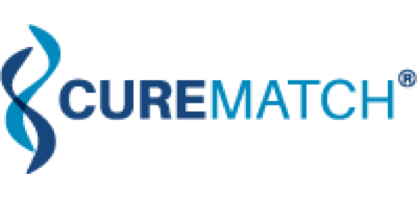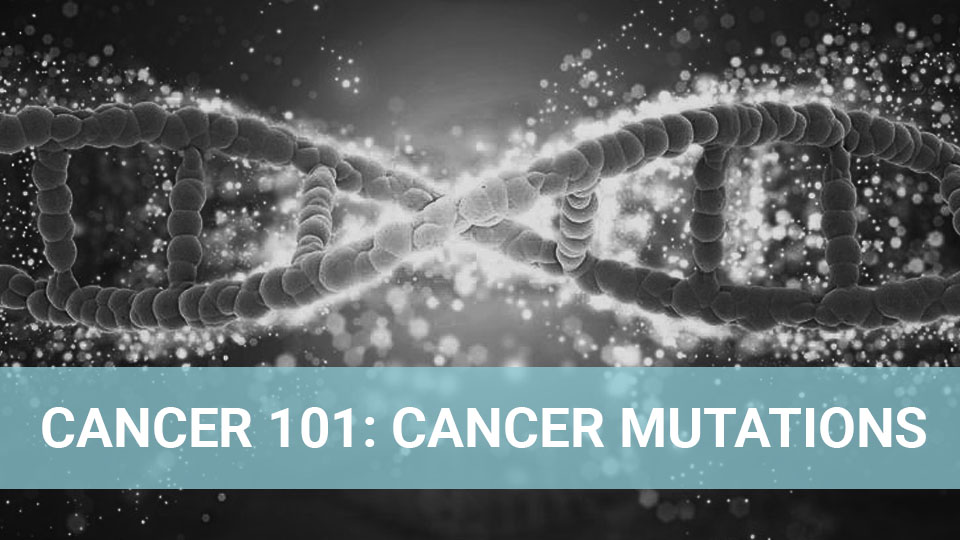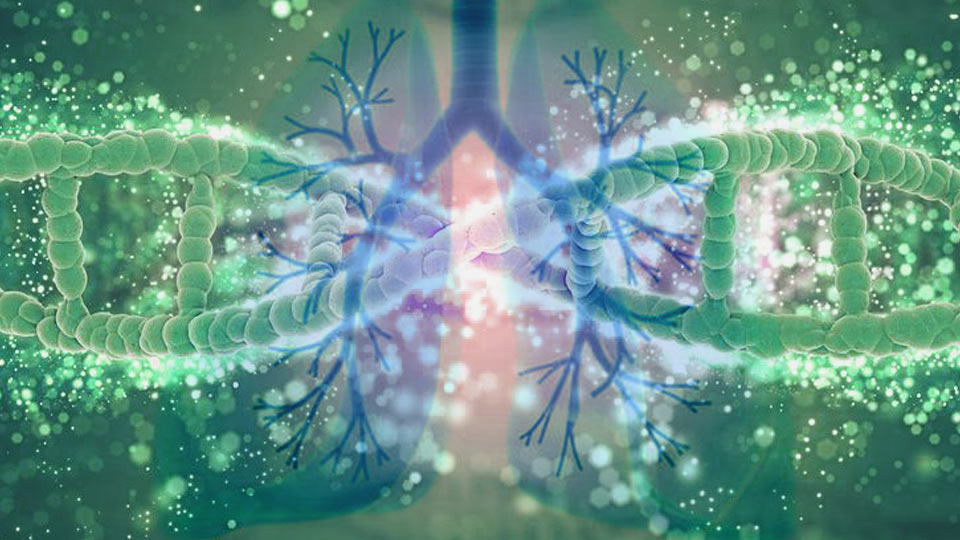Cancer 101: Cancer Mutations
Cancer comes with its own terminology—hopefully over the course of a series of blog posts we will clarify some of these terms and concepts. Because, after all, how can one make an informed decision about cancer treatment options if one doesn’t understand the disease and the cancer mutations involved?
What Is Cancer?
First of all, “Cancer,” as a medical term, is actually used to describe more than 100 diseases, all of which are characterized by the uncontrolled growth of abnormal cells—although the rate of growth or “aggressiveness” of the cancer can vary greatly depending on the cancer mutations.
Unlike a cold or the flu, which arise from the actions of an invading microorganism, such as a bacteria or virus, cancer results from the transformation of one’s own cells. In cancer, these transformed cells lose the ability to control their own growth and continue to make new abnormal cells. In most cases, if left untreated, cancer cells can out-compete normal cells for space and available resources, such as nutrients and oxygen. In addition, while cancer can start anywhere in the body, unlike normal cells, cancer cells can also spread to and invade other parts of the body in a process known as metastasis.
Although the exact causes of cancer remain largely unknown, all types of cancer are thought to result from diverse cancer mutations in a cell’s DNA. DNA, or deoxyribonucleic acid, is an organic molecule found in the nucleus of each cell of the body and it contains all of the information that makes you you.
DNA, Genes and Proteins
DNA can be thought of as a long chain, but in this case, the links of the chain are composed of 4 distinct molecules known as nucleotides (i.e., adenine, thymine, cytosine, guanine). Dispersed along the length of the DNA chain are regions known as genes, which can be thought of as patterns, templates or blueprints, that are actually “encoded” into the DNA by the order or sequence of the 4 nucleotides found within the gene region (e.g., ATCG—sometimes also referred to as the 4-letter genetic alphabet). Although there are a number of steps along the way, the sequence of nucleotides comprising (or coding for) a gene will ultimately be translated by the cell into a protein—molecules that do most of the work in cells.
Similar to DNA, proteins can also be thought of as chains, but instead of nucleotides, the links of protein chains are molecules known as amino acids. While there are hundreds of amino acids, only a specific set of 20 amino acids are actually “encoded” by the sequence of nucleotides found in the genes. More specifically, it is these 20 amino acids and their sequence in the protein chain that is coded by the genes and translated by the cell for the synthesis of proteins through a complicated multistep biological process that will not be discussed here.
Mutations and Cancer Mutations
Alterations in the nucleotide sequence are known as mutations. Mutations can be inherited (passed on from parent to child—also known as hereditary of “germline” mutations) or they can arise during the course of a person’s life (also known as acquired or “somatic” mutations). Somatic mutations can have a number of causes, including environmental factors (such as cigarette smoke) or mistakes which occur in the DNA as it is copied during normal cell growth and proliferation.
Molecular testing results provide important information not only on the genes that are mutated but how they are mutated. In this procedure, a sample of a tumor is taken, the DNA of the cells within the tumor is extracted and sequenced, and a report of the cancer mutations detected is sent to the doctor for evaluation (this is also the information that CureMatch uses).
For example, a typical molecular testing report prepared from the analysis of a lung tumor might say that an “EGFR L858R cancer mutation was identified.” What this means is that the sequence of amino acids which make up the Epidermal Growth Factor Receptor protein chain (which is 1210 amino acids long) has been altered at amino acid number 858 such that the amino acid, leucine (L), which is normally found at this point in the protein, has been changed to the amino acid, arginine (R).
How do we know a cancer mutation has actually occurred? Since the gene code which makes up the normal EGFR gene is known, during the molecular testing analysis, the nucleotide sequence of the DNA encoding the EGFR gene is identified and compared to the normal sequence. In this case, of the 244,589 nucleotides in the EGFR gene, a single change in the nucleotide found at position 2573 was identified (from a thymine (T) to a guanine (G)). Since the “code” has changed (or mutated), this change of a single nucleotide at position 2573 in the DNA sequence of the EGFR gene will result in the substitution of the amino acid arginine (R) for leucine (L) at amino acid 858 in the EGFR protein.
This type of mutation in the DNA is referred to as a “point” mutation since there is a change at just a single point in the DNA sequence of a gene (in this case EGFR). When talking about the protein, this type of mutation is known as a “missense” mutation, such that there is a change or substitution of one amino acid in the protein chain for a different amino acid. The resulting change in the amino acid sequence could have a number of effects on the function of the protein. Among these, the amino acid substitution could result in:
- no effect on the protein function (protein continues to function normally)
- activation of the protein in the absence of its normal stimulus (cell loses control of the now constantly active protein—also sometimes called a “constitutively active” protein)
- inactivation of the protein (protein is synthesized, but it has lost its function)
- loss of the protein (mutation results in a non-viable protein)
In the case of this cancer mutation in EGFR, this substitution of arginine for leucine at position 858 of the protein can lead to uncontrolled activation of EGFR which can result in increased cell survival, proliferation, invasion and metastasis. Since this inappropriate and uncontrolled activity can lead to the formation of tumors, this type of mutation is considered “oncogenic.”
Other types of protein mutations include “nonsense” mutations. Nonsense mutations are also a type of DNA point mutation, but in this case the DNA mutation results in either the loss of the protein or the production of a shortened (truncated) non-functional protein. These types of cancer mutations are particularly bad if they affect genes or proteins which are involved in regulating cell growth, proliferation and/or migration, or the so-called “tumor suppressor” genes.
Tumor protein p53 (TP53), for example, which is the most frequently mutated tumor suppressor gene in human cancer, encodes a DNA-binding protein with an important role in controlling the expression (or production) of other genes (and thus proteins) involved in cell growth and proliferation. Nonsense mutations in the TP53 gene usually result in the production of non-functional TP53 proteins due to early termination (or “truncation”) of the protein—this can lead to a loss in gene regulation and uncontrolled cell growth, proliferation and migration. So, you see, understanding cancer mutations and how they alter normal cell function(s) is key to understanding and treating cancers.
Conclusion
Over the past several years, rapid advances in our ability to identify genes and proteins related to cancer have occurred. To date, over 600 genes and more than 4,000,000 mutations are suspected to be related to cancer. This information has led to the idea that rather than categorizing and treating cancer by the tissue in which it arose (lung, breast, colon, etc), it would be better to consider the cancer-causing mutations present within each individual patient’s tumor (which are generally unique to each patient) and to design treatment regimens which target each patient’s cancer mutations—this approach is known as Precision Medicine or Personalized Medicine. This is the approach CureMatch is taking. Through the implementation of our proprietary software platform and extensive databases of cancer gene mutations and drugs targeting them, CureMatch provides doctors and patients with the best combination therapies to treat an individual cancer.


